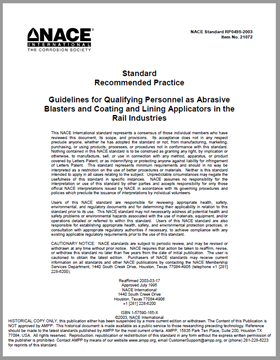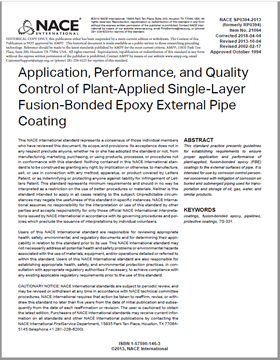The prediction of performance of polymeric materials, in particular plastics (thermoplastics and thermosets) and elastomers, is of great importance in selection of materials for service involving contact with any degrading environment. There is no "corrosion rate" similar to that for metals that allows fairly reliable extrapolation of data to a time when criteria would indicate failure. Therefore, chemical resistance testing of polymeric materials has involved long-term tests (up to 12 months) and a great amount of uncertainty in prediction, even after long-term tests.
To date, long-term exposure tests have been recommended. These long-term tests have produced valuable and reliable results for common environments and for materials suppliers who have an interest in providing confident recommendations for the chemical exposures tested. In fact, long-term tests are significantly more desirable for marginal materials, and often a marginal material is an economical or more available selection. However, the materials engineer who must select a material for unusual fluids or mixtures of fluids does not often have time for long-term tests. There is a need for a more reliable short-term test.
This NACE standard test method is based on past exposure test methods, especially ASTM D 471, 1 "Standard Test Method for Rubber Property-Effect of Liquids," but has been modified in order to increase the confidence of performance predictions and at the same time greatly reduce the test time required. Sequential observations and plotting of data with time allows earlier evaluation than other tests for materials that are patently unsatisfactory or acceptable. This test method involves exposure to the test environment followed by a drying (or desorption) period. This procedure allows the determination of final weight change after desorption of absorbed species; this may determine whether any leaching of components of the polymer has occurred during exposure.
Examples of how this test method has been used to advantage were documented by Fisher and Niesse.
This standard was prepared by NACE Task Group T-3L-19, a component of Unit Committee T-3L on Technologies for Corrosion Measurement, and is issued under the auspices of Group Committee T-3 on Corrosion Science and Technology.
1.1 This standard for exposure testing of polymeric materials gives detailed information on procedures for conducting the "sequential absorption and desorption" test. Limitations and cautions are identified. However, the criteria for prediction of performance are specific to each application and are not addressed here except in very general terms.
1.2 The test procedures include (1) preparing and measuring test specimens; (2) preparing the test fluid as required; (3) exposing test specimens to the test fluid; (4) periodically removing the test specimens, measuring selected properties and evaluating the test specimens, and re-exposing the test specimens to the test fluid; (5) removing the test specimens from the test fluid when the immersion exposure is completed and allowing them to equilibrate in air, preferably at the same temperature as the exposure temperature; (6) periodically measuring selected properties in air and evaluating the test specimens; and (7) plotting the measured properties with time.
Historical Document 1996




